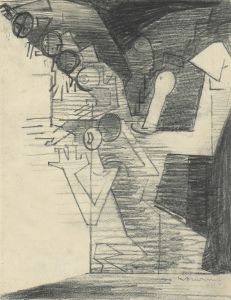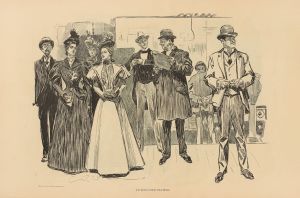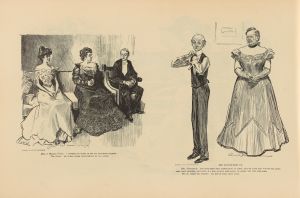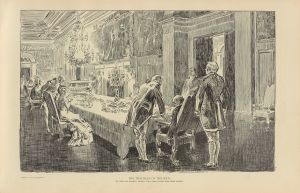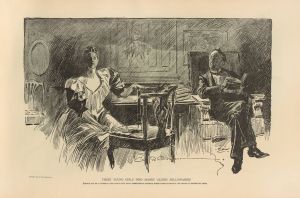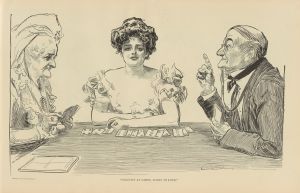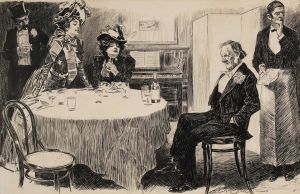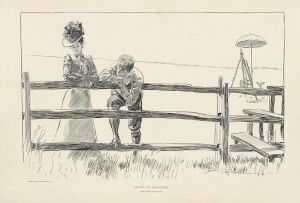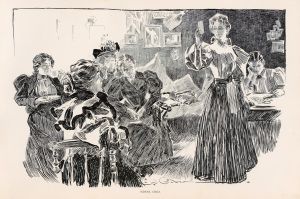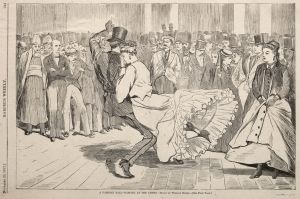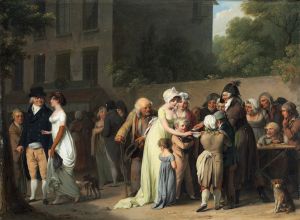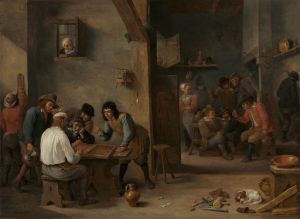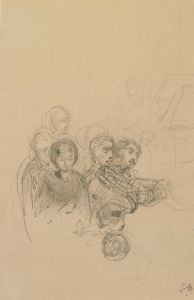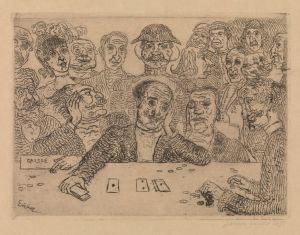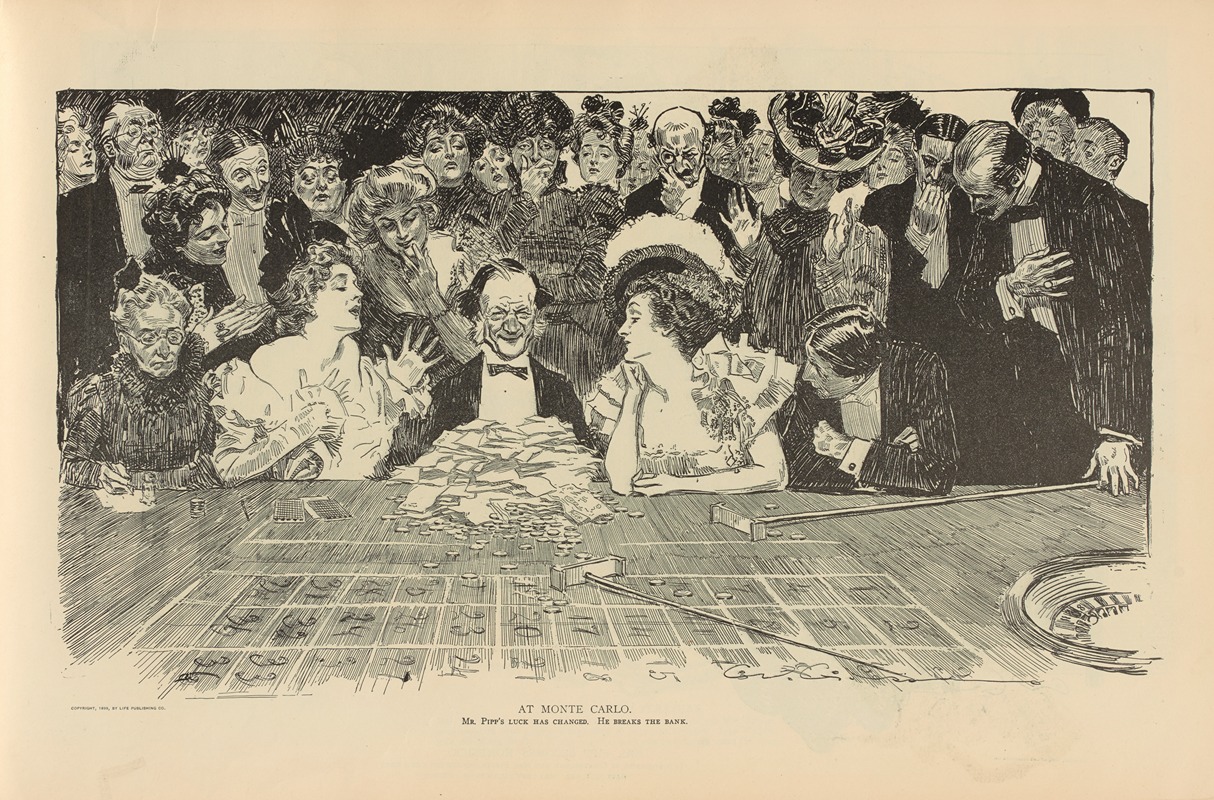
At Monte Carlo
A hand-painted replica of Charles Dana Gibson’s masterpiece At Monte Carlo, meticulously crafted by professional artists to capture the true essence of the original. Each piece is created with museum-quality canvas and rare mineral pigments, carefully painted by experienced artists with delicate brushstrokes and rich, layered colors to perfectly recreate the texture of the original artwork. Unlike machine-printed reproductions, this hand-painted version brings the painting to life, infused with the artist’s emotions and skill in every stroke. Whether for personal collection or home decoration, it instantly elevates the artistic atmosphere of any space.
Charles Dana Gibson was an influential American illustrator, best known for his creation of the "Gibson Girl," an iconic representation of the independent and fashionable American woman at the turn of the 20th century. One of his notable works is "At Monte Carlo," which exemplifies his keen eye for social commentary and his ability to capture the nuances of high society life.
"At Monte Carlo" is a pen-and-ink illustration that reflects Gibson's characteristic style, marked by its detailed line work and expressive characters. The illustration depicts a scene set in the glamorous and opulent environment of Monte Carlo, a renowned destination for the elite, famous for its luxurious casinos and vibrant social scene. This setting provides a rich backdrop for Gibson to explore themes of wealth, leisure, and the social dynamics of the time.
In the illustration, Gibson captures a moment at the casino, where elegantly dressed men and women are engaged in the activities typical of Monte Carlo's high society. The characters are portrayed with a sense of sophistication and poise, embodying the fashion and demeanor of the era. The men are often depicted in formal attire, while the women are shown in the latest fashions, complete with elaborate hats and stylish gowns. This attention to detail not only highlights Gibson's artistic skill but also serves as a commentary on the societal norms and expectations of the period.
Gibson's work often included subtle humor and irony, and "At Monte Carlo" is no exception. Through the expressions and interactions of the characters, Gibson offers a glimpse into the social rituals and the sometimes superficial nature of the elite. The illustration may depict a range of emotions, from excitement and anticipation to boredom and detachment, reflecting the varied experiences of individuals within this exclusive setting.
The "Gibson Girl" archetype, which Gibson popularized, is also evident in this work. The women in the illustration embody the grace, confidence, and independence associated with the Gibson Girl, challenging traditional gender roles and offering a new vision of femininity. This representation resonated with contemporary audiences and contributed to the evolving perception of women's roles in society.
"At Monte Carlo" is a testament to Charles Dana Gibson's ability to capture the spirit of his time through art. His illustrations not only entertained but also provided insightful commentary on the cultural and social dynamics of the early 20th century. Today, Gibson's work remains a valuable historical record, offering a window into the past and the changing landscape of American society.
While specific details about the creation and reception of "At Monte Carlo" may not be extensively documented, the illustration continues to be appreciated for its artistic merit and its reflection of the era's social milieu. Charles Dana Gibson's legacy as a pioneering illustrator endures, with his work continuing to influence artists and captivate audiences worldwide.





